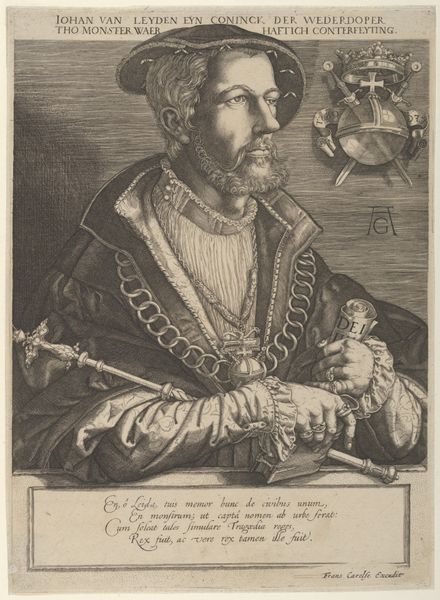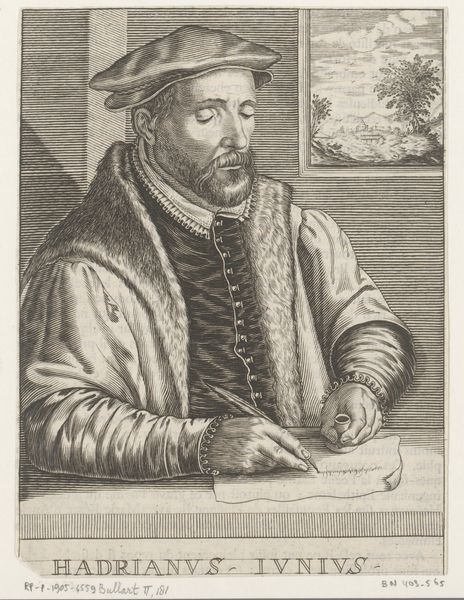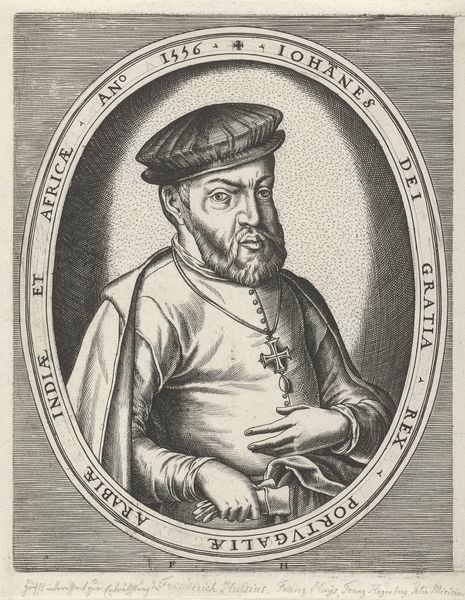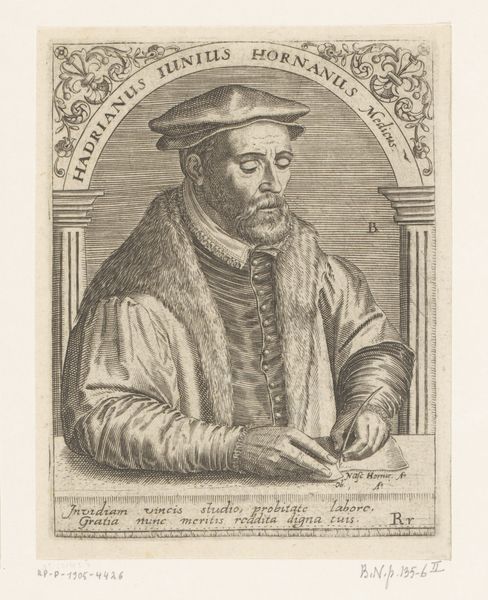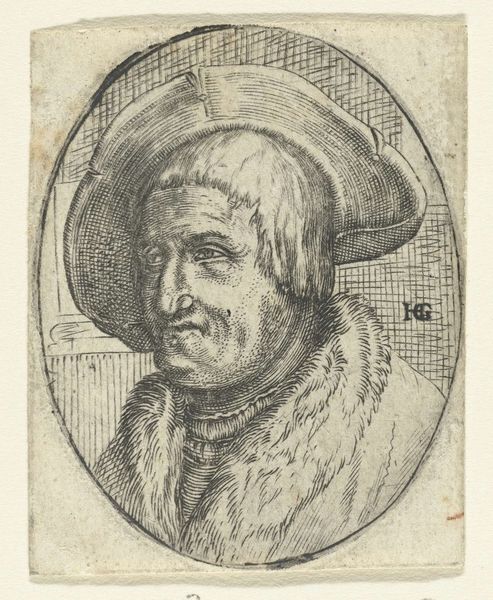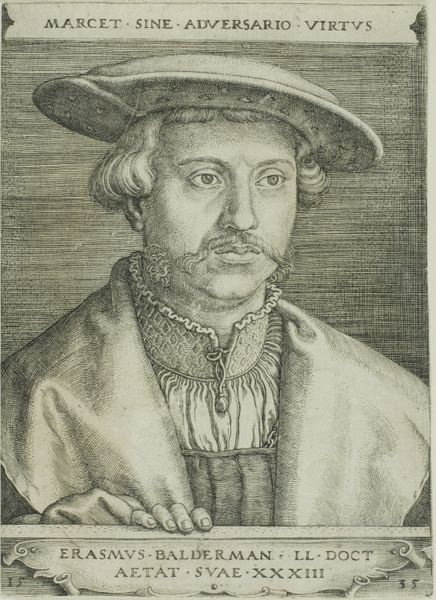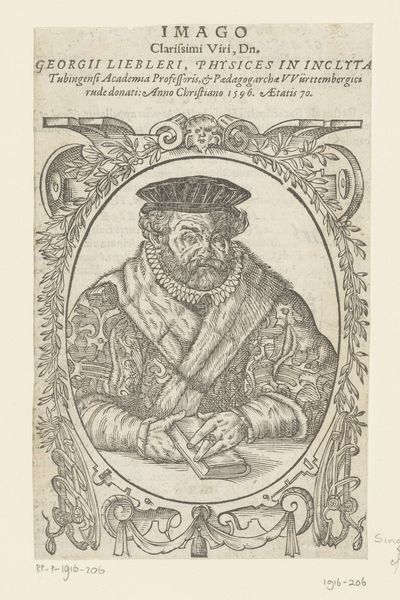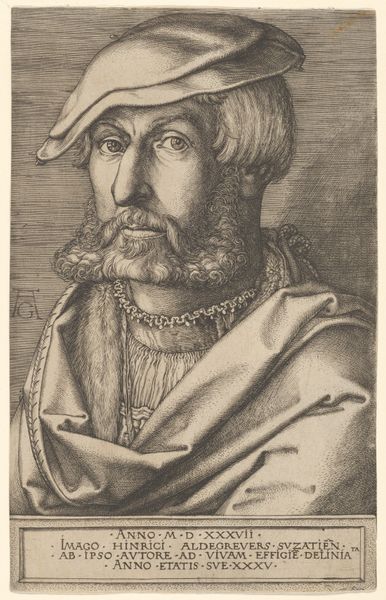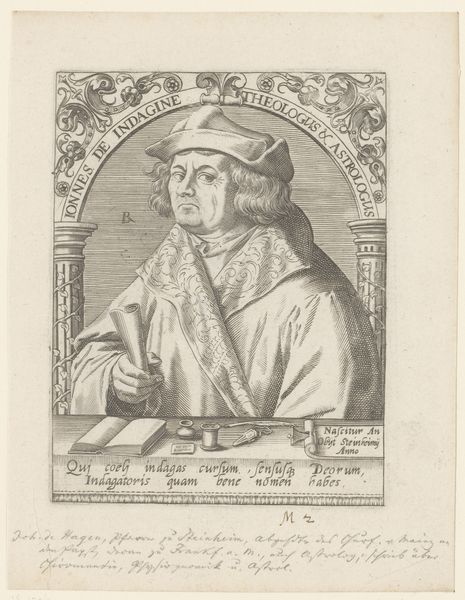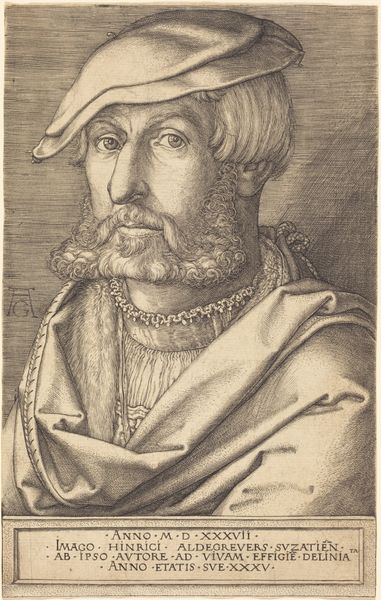
drawing, print, engraving
#
portrait
#
drawing
# print
#
line
#
portrait drawing
#
history-painting
#
northern-renaissance
#
engraving
#
realism
Dimensions: Sheet: 12 1/16 × 8 5/8 in. (30.7 × 21.9 cm)
Copyright: Public Domain
This engraving of Wilhelm V, Duke of Julich, Cleve and Berg, was made by Heinrich Aldegrever in 1540, using the exacting technique of metal engraving. Look closely, and you can see how Aldegrever used a burin – a hardened steel tool – to manually carve lines into a copper plate. The plate would then be inked and wiped clean, with ink remaining only in the incised lines. Finally, the plate was pressed onto paper, leaving a precise impression. Metal engraving was a painstaking process, demanding immense skill. This intaglio printmaking technique allowed for the creation of fine, detailed lines, essential for capturing the intricate details of Wilhelm's garments, jewelry, and facial features. As a relatively expensive process, it was especially well-suited to making portraits of the European elite. The image is not just a record of Wilhelm’s likeness, but also of the labor, skill, and social context embedded in its production. It reminds us that even seemingly simple images can be powerful testaments to the values of their time.
Comments
No comments
Be the first to comment and join the conversation on the ultimate creative platform.

